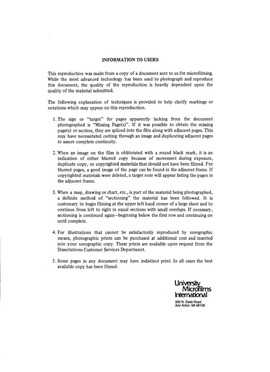| dc.contributor.author | Lubrano, Teresa M., | en_US |
| dc.date.accessioned | 2013-08-16T12:29:16Z | |
| dc.date.available | 2013-08-16T12:29:16Z | |
| dc.date.issued | 1984 | en_US |
| dc.identifier.uri | https://hdl.handle.net/11244/5289 | |
| dc.description.abstract | The recurring themes in the Cuentos de la selva attempt to gently, and at times humorously, teach the type of psychological and social attributes that will allow the child to become a mature, successful and happy adult. Among these themes are those of compassion, understanding, selflessness, perseverance, loyalty and friendship. Another pervasive theme in the stories is that of death which allows the child to deal with and understand this universal phenomenon according to the various stages of his psychological and sociological development. Within each story, the animal hero or heroes teach explicit and implicit lessons which the child can understand and emulate in his social relationships with his parents, siblings and pets. Also, they show the child positive and social attributes which will enable him to feel psychologically at peace with himself and with those around him. | en_US |
| dc.description.abstract | In the final analysis, Quiroga not only contributes to the child's psychological and social maturation through these stories, but also reveals the often overlooked tender part of his nature--experienced perhaps only by his children and his pets. | en_US |
| dc.description.abstract | Through an analysis of Horacio Quiroga's Cuentos de la selva, their importance to the psychological and sociological maturation of a child can be seen. The stories in this collection have been examined in the light of the history of children's literature and the criteria experts have suggested that is paramount for the creation of children's stories. Authorities such as Bruno Bettelheim and Jean Piaget, among others, have been consulted. | en_US |
| dc.description.abstract | The Cuentos de la selva, like most good literature written especially for children, evidence a continuation of the oral tradition and fulfill the child's psychological and sociological need for role models, love, a sense of belonging, competence (which will allow him to survive in an adult society), meaning, order, and beauty in life. In addition, Quiroga uses the animal characters in his stories to embody various aspects of the child's own personality which might otherwise be too complex, unacceptable and contradictory for him to handle were they not set in the framework of fiction. | en_US |
| dc.format.extent | vii, 143 leaves ; | en_US |
| dc.subject | Literature, Latin American. | en_US |
| dc.title | Horacio Quiroga's Cuentos de la selva para los ninos : | en_US |
| dc.type | Thesis | en_US |
| dc.thesis.degree | Ph.D. | en_US |
| dc.thesis.degreeDiscipline | Department of Modern Languages, Literatures, and Linguistics | en_US |
| dc.note | Source: Dissertation Abstracts International, Volume: 45-08, Section: A, page: 2541. | en_US |
| ou.identifier | (UMI)AAI8425542 | en_US |
| ou.group | College of Arts and Sciences::Department of Modern Languages, Literatures, and Linguistics | |
